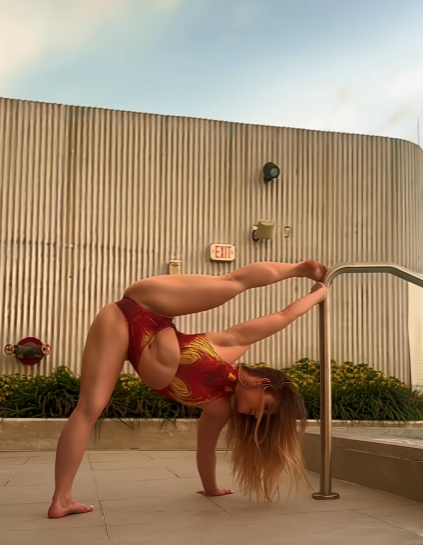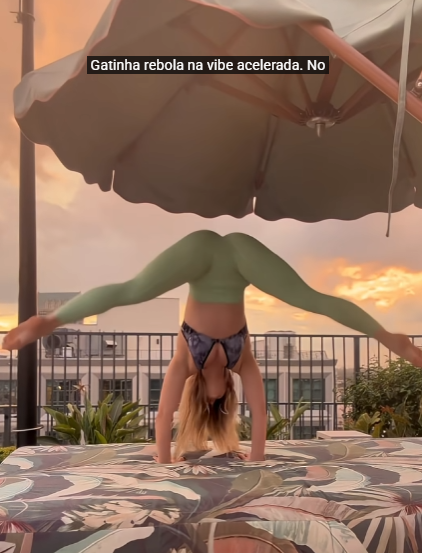
Have you ever come across something so strange, so new, or so daring that you stopped for a moment and asked yourself, “Would I try that?” Maybe it was a bizarre food combination, a wild adventure, or a new way of thinking. Curiosity is a powerful force—it pushes us toward discovery, learning, and sometimes laughter. Whether it’s tasting a fried tarantula, doing cold-water therapy, or joining a silent yoga retreat, life constantly presents us with chances to step outside our comfort zones. The question is: would you dare to say yes?
Let’s start with something simple—food. Every culture around the world has dishes that might seem unusual to outsiders. In Cambodia, people snack on crispy fried crickets and tarantulas; in Japan, some adventurous diners try fugu, a pufferfish that can be deadly if prepared incorrectly. In Iceland, there’s fermented shark meat, known as hákarl, which has a strong, ammonia-like smell. To the locals, these foods are traditional and even delicious. But for someone trying them for the first time, it’s a test of courage and open-mindedness.
Food is often the easiest and safest way to explore something new. It’s temporary—you taste it, experience it, and it’s done. Even if you don’t like it, you’ve gained a story. Imagine being at a market in a foreign country, surrounded by aromas you’ve never smelled before. A vendor smiles, offering you something mysterious wrapped in a banana leaf. Would you try it, or would you politely decline and walk away?
Then there are experiences that challenge not just our taste buds, but our entire sense of adventure. Think about bungee jumping from a tall bridge, skydiving from an airplane, or scuba diving deep under the ocean among glowing coral and fish. The thrill of facing fear and doing something extraordinary can change how we see ourselves. The moment you leap, your heart races, your mind screams “What am I doing?”—but afterward, there’s only exhilaration. You feel alive, free, and proud that you tried.
Still, not every “Would you try this?” moment needs to involve adrenaline. Sometimes, the most meaningful challenges are quiet, internal, and personal. Trying yoga for the first time, for example, can feel intimidating if you’re not flexible. Meditating in silence for ten minutes might sound impossible for someone used to noise and constant activity. Yet, those small steps can open doors to peace and self-awareness. The first time you manage to hold a pose or calm your breathing, it feels like discovering a hidden strength inside you.

Even in daily life, there are countless chances to try something new. It might be starting a garden, cooking without a recipe, or learning a new language. It might be speaking in front of a group or telling someone how you truly feel. These are the kinds of risks that build confidence. Each time you say yes to something unfamiliar, you grow. You may stumble, but you also expand your sense of what’s possible.
Of course, trying new things isn’t always easy. There’s fear—the fear of failure, embarrassment, or disappointment. Our brains are wired to seek comfort and predictability. The unknown can feel threatening. That’s why people hesitate. But think about the last time you tried something different, even something small. Maybe you joined a dance class, or you decided to take a new route to work. Remember how exciting it felt, how it broke your routine? The truth is, life’s best memories often come from the moments we dared to say, “Why not?”
Now, let’s consider technology—another area full of “Would you try this?” questions. Would you let artificial intelligence write a song for you? Would you wear a virtual reality headset and step into a completely digital world? Would you use a self-driving car or trust a robot to cook your dinner? These innovations are no longer science fiction—they’re real, and they’re reshaping how we live. Some people jump right in, eager to experiment. Others stay cautious, wondering if it’s safe or wise. But history shows that every major change—from electricity to smartphones—started with brave individuals willing to try something new.
Sometimes, the question isn’t just about trying something external—it’s about trying a new attitude. What if you tried to forgive someone who hurt you? What if you tried to be kinder to yourself? What if you tried to see the world from another person’s perspective? These emotional challenges can be even harder than skydiving or eating insects. They require vulnerability, patience, and courage of the heart. Yet, they also bring the deepest rewards: peace, understanding, and connection.
For example, imagine a person who has lived their entire life fearing change. One day, they decide to try volunteering at a local shelter. At first, it feels uncomfortable—they don’t know anyone, and the tasks are new. But slowly, they begin to feel joy in helping others, and they make new friends. That one decision to “try” becomes a turning point, showing them that stepping out of fear can lead to belonging.

Trying something new also helps us overcome boredom. Life can sometimes feel repetitive—same work, same routine, same food. When we introduce something new, even something small, our brains wake up. We pay attention again. The world feels colorful, unpredictable, and alive. That’s why people travel, explore hobbies, and seek novelty—it reminds them that they’re still learning, still growing.
But it’s also okay to say no. Not every challenge is worth taking. Wisdom is knowing when to step forward and when to step back. If something truly feels unsafe or goes against your values, declining is perfectly fine. The point isn’t to say yes to everything, but to say yes more often—to give yourself permission to experience life more fully.
So, the next time you see something unusual, inspiring, or a little scary, pause and ask yourself: Would I try this? It could be as simple as tasting a new fruit, as brave as moving to a new city, or as emotional as opening your heart to love again. Each decision is a chance to rewrite your story, to fill your life with memories instead of “what ifs.”

Trying new things doesn’t mean losing who you are—it means discovering more of who you can become. Every adventure, every failure, every surprise adds another layer to your experience. When you look back years later, you’ll see that the moments that shaped you most were the ones that began with a single, curious question: Would you try this?
And maybe, the real answer isn’t just “yes” or “no.” Maybe it’s “I’ll give it a shot.” Because even if things don’t go as planned, you’ll still come away with something priceless—a story to tell, a lesson learned, and a reminder that life is richer when you’re brave enough to try.



